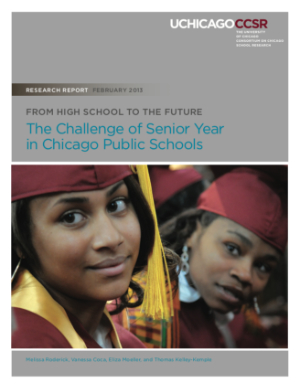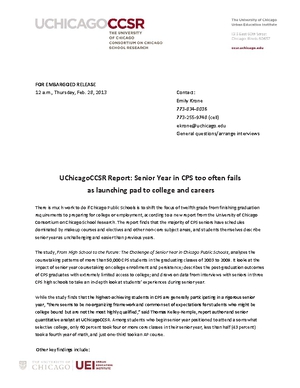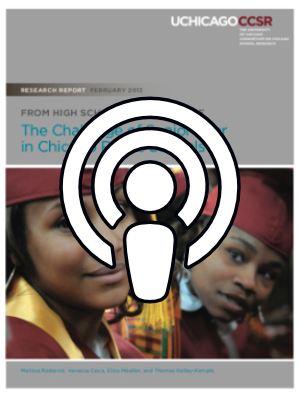1. What courses do students take senior year?
2. Does senior year coursework vary by race/ethnicity or gender?
3. Are there differences in norms and expectations for students across high schools, associated with differences in college enrollment and college retention?
4. Is senior year a “waste of time?”
This report finds there is much work to do to shift the focus of senior year in Chicago from finishing graduation requirements to preparing for college or employment. This report shows that the majority of CPS seniors have schedules dominated by makeup courses and electives and other non-core subject areas, and students themselves describe senior year as unchallenging and easier than previous years.
Over the past several years, “college and career readiness for all,” has become the mantra of education reform in the United States. The challenges of senior year described in this report, however, demonstrate the magnitude of the problems educators face in creating an educational experience that truly prepares students for life after graduation. This report is designed to inform a discussion of how best to reform senior year, as well as to spark a conversation about the important challenges that precede and follow this pivotal period.
The study analyzes the coursetaking patterns of more than 50,000 CPS students in the graduating classes of 2003 to 2009. It looks at the impact of senior year coursetaking on college enrollment and persistence; describes the post-graduation outcomes of CPS graduates with extremely limited access to college; and draws on data from interviews with seniors in three CPS high schools to take an in-depth look at students’ experiences during senior year.
CPS must also grapple with what senior year should look like for a particularly challenging group of students: the roughly 45 percent of CPS graduates who begin senior year off of the trajectory to attend a four-year college with some level of selectivity. In the fall after graduation, the most common outcome for these students was to be neither working nor in school, the report finds.







